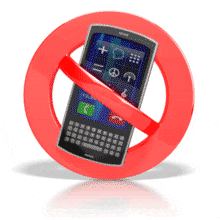Banning the Buzz: Saskatchewan’s Classroom Policy
 So, I read about this the other day during my last class—at the start of the 2024–25 school year, Saskatchewan decided to ban cellphones during class for all K–12 schools. The idea is to reduce distractions and help students focus more. Apparently, this is in line with what Ontario, Alberta, and Manitoba are doing too. I can see why they made the move, but naturally, it has sparked a lot of debate about whether it’s really helpful or maybe a bit too strict for teachers, students, and parents.
So, I read about this the other day during my last class—at the start of the 2024–25 school year, Saskatchewan decided to ban cellphones during class for all K–12 schools. The idea is to reduce distractions and help students focus more. Apparently, this is in line with what Ontario, Alberta, and Manitoba are doing too. I can see why they made the move, but naturally, it has sparked a lot of debate about whether it’s really helpful or maybe a bit too strict for teachers, students, and parents.
The Upside: Focus, Engagement, and Social Connection
From what I’ve read and seen, teachers and administrators often struggle to keep students engaged when phones are always in their pockets. Limiting phone use can actually make a big difference—students pay more attention, participate in class, and even talk to each other more.
I came across reports from Ontario and Manitoba showing that after a year of bans, students were more interactive, less distracted, and classrooms felt livelier. Some teachers even noticed students playing board games or just chatting instead of staring at screens. And interestingly, some students themselves said that being phone-free helped them break the habit of constantly checking social media.
Watch the video about Ontario’s cellphone ban: “Four months into Ontario’s ban on cellphones in classrooms, many teachers say students have accepted the change and are more focused, but it’s too early to say if there’s been an impact on performance.”
Canadian Parents’ Reactions
I also found some interesting reactions from Canadian parents on a Facebook page where the question asked was:
“To parents with kids in the middle grades, how do you feel about the recent provincial cell phone ban in schools?”
Here’s what some of them replied: 
-
Marc Fiola: “They don’t need a phone in school, we didn’t have one and survived and turned out ok 🤷♂️ Got our messages from our parents from the secretary like it should be, and most of the time our parents only called the school when it was absolutely necessary.”
-
Melissa Assilem: “Is it no phones, or no phones like. On the person? I imagine in a backpack on silent or off til after school would be ok. I’m ok with it, kids aren’t there to play on their phones.”
-
Derek Stein: “Meh, but would like him to keep a phone in his backpack for after school to coordinate pickups! Seems like that wouldn’t be allowed with this new rule …”
These comments really highlight how parents see both the benefits of reducing distractions and the practical challenges of staying connected outside school hours.
The Downside: Digital Dependence and Student Stress
But here’s the catch—phones are addictive. I read a story from Calgary where a student completely freaked out when his phone was taken away, asking everyone around him to borrow theirs just so he could check Instagram. As well, I came across a video that delves into how excessive cellphone use can impact students’ focus and academic performance. In the video, an experiment demonstrates the negative effects of constant texting on students’ ability to concentrate. This highlights the addictive nature of smartphones and the challenges educators face in maintaining student attention.
This video underscores how deeply Gen Z is tied to technology. Take phones away too suddenly, and you might see anxiety, frustration, or even rebellious behavior.
Lessons from My Classroom: India’s Phone Struggles
 I don’t have experience teaching in Canadian schools, but from my six years teaching grades 9–12 in India, I can tell you phones are a major distraction no matter where you are. Even when phones were banned, students found ways to sneak them in and hide them. And it got worse—some students started recording videos of teachers in class, making funny or mocking clips, and posting them on social media. Can you imagine that? This shows how much misuse is possible and why strict rules can sometimes feel necessary. Our school had to implement regular checks and frisking to make sure students weren’t breaking the rules.
I don’t have experience teaching in Canadian schools, but from my six years teaching grades 9–12 in India, I can tell you phones are a major distraction no matter where you are. Even when phones were banned, students found ways to sneak them in and hide them. And it got worse—some students started recording videos of teachers in class, making funny or mocking clips, and posting them on social media. Can you imagine that? This shows how much misuse is possible and why strict rules can sometimes feel necessary. Our school had to implement regular checks and frisking to make sure students weren’t breaking the rules.
Global Perspective: Nepal’s Social Media Ban and Gen Z Reactions
 I also watched the news about what happened in Nepal, and it really caught my attention. The government banned 26 social media platforms, including Facebook, Instagram, WhatsApp, and YouTube. The reaction was huge—nationwide protests led mostly by Gen Z erupted, and there were violent clashes in major cities. It really shows how integral technology and social media are to young people today. “This made me think—if removing access to social media entirely can trigger such a strong reaction among Gen Z in Nepal, what might happen when we limit phone use in schools? It highlights how deeply connected young people are to their devices, and how abrupt restrictions, even for good reasons, can be stressful.” Take it away abruptly, and it’s not just inconvenient—it can be psychologically stressful and even spark public unrest.
I also watched the news about what happened in Nepal, and it really caught my attention. The government banned 26 social media platforms, including Facebook, Instagram, WhatsApp, and YouTube. The reaction was huge—nationwide protests led mostly by Gen Z erupted, and there were violent clashes in major cities. It really shows how integral technology and social media are to young people today. “This made me think—if removing access to social media entirely can trigger such a strong reaction among Gen Z in Nepal, what might happen when we limit phone use in schools? It highlights how deeply connected young people are to their devices, and how abrupt restrictions, even for good reasons, can be stressful.” Take it away abruptly, and it’s not just inconvenient—it can be psychologically stressful and even spark public unrest.
Finding the Balance: Guiding Gen Z Toward Healthy Tech Use
 All this makes me think Saskatchewan’s ban is a tricky balancing act. On one hand, it’s great for focus and classroom engagement. On the other, students who are deeply attached to their phones can feel stressed or anxious. From what I’ve read about Canada, most students adapt over time, but some need guidance to manage their digital dependence. The key, I think, is flexibility: allow phones for medical needs or learning purposes, but keep them out of general classroom use. That way, students can stay focused, interact socially, and still maintain a healthy relationship with technology.
All this makes me think Saskatchewan’s ban is a tricky balancing act. On one hand, it’s great for focus and classroom engagement. On the other, students who are deeply attached to their phones can feel stressed or anxious. From what I’ve read about Canada, most students adapt over time, but some need guidance to manage their digital dependence. The key, I think, is flexibility: allow phones for medical needs or learning purposes, but keep them out of general classroom use. That way, students can stay focused, interact socially, and still maintain a healthy relationship with technology.
